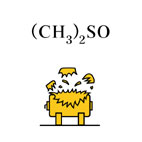| Case Name |
Rupture of a solvent recovery drum caused by an abnormal reaction due to a temperature rise at a sugar ester manufacturing plant |
| Pictograph |

|
| Date |
September 25, 1987 |
| Place |
Yokkaichi, Mie, Japan |
| Location |
Chemical factory |
| Overview |
Dimethyl sulfoxide was recovered by evaporation at a sugar ester (esterification of sucrose and fatty acid) manufacturing plant of a factory in Mie prefecture. The recovery drum burst due to abnormal internal pressure resulting from a temperature rise. |
| Incident |
A solvent recovery drum where recovery was performed by evaporation of the solvent ruptured at a sugar ester manufacturing plant. Raising an evaporation temperature resulted in thermal decomposition, caused increase in the inner pressure of the drum, and the drum burst. It was the first operation of the drum. A sketch of the drum is shown in Fig2. |
| Processing |
Manufacture |
| Individual Process |
Concentration (Evaporation) |
| Process Flow |
Fig3.Unit process flow
|
| Chemical Equation |
Fig4.Chemical reaction formula 1
|
| Substance |
Dimethyl sulfoxide |
| Type of Accident |
Rupture |
| Sequence |
The sugar ester manufacturing plant had completed an operating cycle, and recovery of a solvent started. The first batch of solvent recovery was completed.
05:00 on September 25th, 1987; liquid charge of second batch of recovery started, and steam heating started.
20:00 liquid charge was completed.
22:50 steam heating was completed.
23:00 withdrawal of the bottom liquid started. As the liquid seemed less viscous than before, withdrawal was stopped and preparations for re-concentration started.
23:15 The recovery drum ruptured with a big sound. |
| Cause |
Dimethyl sulfoxide, sucrose, potassium lactate, and other reaction products and decomposition products were considered to be present in the drum. Solvent recovery was designed to be carried out at 130 °C, but the actual temperature was 160 °C at the time of the accident, which would cause an abnormal reaction. Whether the temperature rise was intentional or accidental has not been known because it was a newly constructed plant. |
| Response |
A steam valve and a warm water supply valve were closed. An emergency shutdown of all sections in the plant was carried out. Safety checks for dangerous materials were conducted. |
| Countermeasures |
1. The process should include an alarm system for an abnormal increase in pressure and/or a temperature rise and an automatic shut-down system for highly abnormal pressure and/or temperature.
2. Thorough re-education to follow standards of operation procedure. |
| Knowledge Comment |
Change of an operation temperature without careful consideration may result in a serious accident. As an operation temperature is fixed by some reasons, it should not be changed without sufficient study. |
| Background |
The cause of the abnormal reaction was a temperature rise, but the reason why the temperature rose has been unknown. It is said that temperature was raised intentionally because a higher solvent recovery rate was expected. If this is the case, it was an inappropriate change of the operating temperature without careful prior consideration of the reaction involved. |
| Reason for Adding to DB |
Example of failure caused due to a careless temperature rise |
| Scenario |
| Primary Scenario
|
Ignorance, Insufficient Knowledge, No Thinking of Reaction Danger at Temperature Rising, Planning and Design, Poor Planning, Careless Temperature Rising Plan, Bad Event, Chemical Phenomenon, Abnormal Reaction, Secondary Damage, External Damage, Explosion, Bodily Harm, Death, 2Person Died
|
|
| Sources |
High Pressure Gas Safety Inst. of Japan. Table 4-1. Examples of major domestic accidents related to High Pressure Gas Control Law. High pressure gas protection overview. pp.138-141(1988)
National dangerous material safety association. Rupture accident of solvent recovery drum. 100 cases of accidents at dangerous facilities. pp.56-57(1991)
High Pressure Gas Safety Inst. of Japan. Sugar ester manufacturing facility - Rupture of solvent recovery can. Accidents Examples of Petroleum Refinery and Petrochemical units. pp.165-168(1995).
Masamitsu Tamura. Masahide Wakakura. Rupture of solvent recovery drum of sugar ester manufacturing plant. Reaction danger-accident case and analysis - p.140(1995)
|
| Number of Deaths |
2 |
| Physical Damage |
A solvent recovery drum, equipment, and piping on a structure were damaged. |
| Financial Cost |
¥27 million. (Accident Examples of Petroleum Refinery and Petrochemical units) |
| Multimedia Files |
Fig2.Sketch of Solvent recovery drum
|
|
Fig5.Chemical formula
|
| Field |
Chemicals and Plants
|
| Author |
YOSHINAGA, Jun (Graduate School of New Frontier Sciences, The University of Tokyo)
TAMURA, Masamitsu (Center for Risk Management and Safety Sciences, Yokohama National University)
|